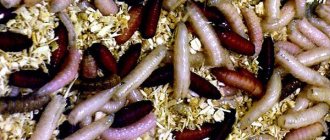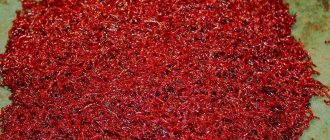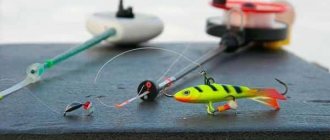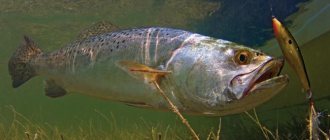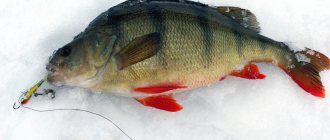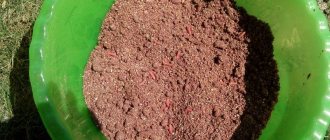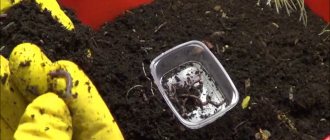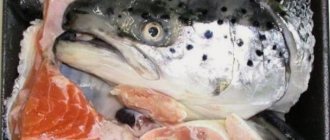The cooled larvae are dried, placed in a linen bag and sprinkled with flour. Now all that remains is to put the bag in a cool place.
- Peculiarities
- Storage methods
- Giving bait additional properties
- Expert advice
Maggot is one of the most favorite delicacies for fish. These little white worms, which cause irresistible disgust in people, are snapped up by fish like hot cakes. An additional advantage of bait is the ability to prepare it in advance and save it until a convenient occasion. We will discuss below how to store such animals.
Thanks to such actions, the bait lives for a long time. Before going fishing, just open the container and take out the required amount of bait, and then simply return the cap to its place.
Home storage rules
The maggot is a rather finicky creature that is highly dependent on temperature and weather conditions. Store maggots at a temperature close to 0°C. If the temperature exceeds this indicator, then over time the larvae will begin to die and simply deteriorate. This also works in the opposite direction - in very cold conditions the bait will simply freeze and will not cause any reaction in the fish.
When purchasing larvae, you should remember that they do not live in the best conditions, so be sure to wash them thoroughly and leave them in a dry place for 30–40 minutes so that they can dry.
Advice for novice fishermen - hatching larvae in the spring takes a long period of time, on average about 60–90 days. Therefore, you should take care of this in advance.
Bait for winter fishing needs to be grown at home starting in the fall. It is believed that larvae grown in such conditions are the most hardened for fishing. This is due to disruptions in the natural regime, so when they appear in the fall, their immunity becomes stronger.
It has been noticed: the closer to winter maggots are harvested, the longer they last and the less hassle they are. Therefore, harvesting should begin in the fall.
Storage in winter
The advantage of being cold outside is that you don’t have to worry about freeing up space in the refrigerator. During this period, the bait can be on the balcony or loggia. However, in severe frosts at night, it is recommended to take the container with maggots to a warmer place.
It is not recommended to store bait in the refrigerator with food; it is better to select a plastic container and arrange a place in it.
You can also create a container *heater* with your own hands:
- We take a plastic pipe with a diameter of 10-15 cm and a length of 1.5-2 m.
- You will also need polystyrene foam 3-4 cm thick. We cut it out like a cork, with which we close one of the ends of the pipe.
- We find a container, a coffee can, which should be slightly smaller than the diameter of the pipe.
- Cut out another foam plug for the cylinder.
- Next, fold the wire in half and bend the ends, pierce the plug in the middle and insert the folded wire so that the ends rest against the body of the lid. All this is so that we can open a jar of maggots without any problems.
- We make 2 small holes in the wall of the jar and tie two laces, a little higher we make a knot (which functions as a handle).
The heating unit is ready, now it needs to be installed. We bury a pipe with a closed end in the ground so that 10-15 cm sticks out of the ground. We pour maggot into the cylinder and lower it, and tie the string so as not to lose it. At the end of all procedures, the plug is tightly inserted into the pipe. Approximately what should happen is shown in the picture below.
Thanks to such actions, the bait lives for a long time. Before going fishing, just open the container and take out the required amount of bait, and then simply return the cap to its place.
Storing maggots on the balcony in winter
It has been noticed: the closer to winter maggots are harvested, the longer they last and the less hassle they are. Therefore, harvesting should begin in the fall.
We pour the selected larvae (there should be no infected or pupated ones among them) into a glass container (bottle), always with dark, rather thick walls and a wide neck, then sprinkle it with sand and sawdust (perhaps someone will find another filler). The ratio is approximately this: maggots - 40 percent, filler - the entire remaining volume.
If you did everything I wrote correctly, then for the next half a year the maggot will be in a kind of suspended animation.
How to properly store maggots for fishing in summer
To put it in the simplest possible terms, put the jar of maggots in the refrigerator. Not in the freezer. If you want them to retain their “freshness” longer, then it is important to follow some rules:
If you did everything I wrote correctly, then for the next half a year the maggot will be in a kind of suspended animation.
You can clean maggots by placing them either in clean sawdust, straw, or medium-sized sand. To store maggots at home for a long time, it is enough to place them in the same jar in which you store and transport them, on the bottom shelf of the refrigerator. They will remain in this state for a week, a month, or more. As soon as you get the maggots, place the box in your bosom, for example, the maggots will “come to life”, restoring their mobility.
Under what conditions can maggots be stored for a long time?
There is verified laboratory information indicating that in nature, a fly larva can go into suspended animation at temperatures down to -30 degrees. The larva spends several years in hibernation, after which it pupates normally and turns into a fly. If a worm lives long enough in its natural environment, then keeping it alive for fishing will be easy. At home, such extremes are not needed; +1 degree is enough for long-term storage.
How to store maggots
You can clean maggots by placing them either in clean sawdust, straw, or medium-sized sand. To store maggots at home for a long time, it is enough to place them in the same jar in which you store and transport them, on the bottom shelf of the refrigerator. They will remain in this state for a week, a month, or more. As soon as you get the maggots, place the box in your bosom, for example, the maggots will “come to life”, restoring their mobility.
When fishing, you need to carefully ensure that the jar with maggots is tightly closed. The larvae are very agile and flexible, and in the event of even a small loophole, they will certainly crawl away. In winter, when fishing, maggots are kept in the bosom, in summer, simply in the shade, stored in the refrigerator.
If the larva is exposed to heat, under the sun's rays, it can harden very quickly: literally in 30 minutes. In conditions of elevated temperature, the process of its transformation into a fly sometimes takes only 3 days. Therefore, it is very important to know at what temperature to store maggots.
Storing maggots in the warm season
In this case, they mean spring, early autumn and, of course, summer. How to store maggots during such a period? To do this, just use the refrigerator. How it works? Firstly, all available maggots are poured into a clean, dry container. Next, sawdust, bran, flour or sifted sand are added there. Then the whole thing is covered with a lid. After which the container is placed in the refrigerator. In this way, maintaining a temperature of 3-5 °C, the larvae can be stored for 2-3 months. This is an essential fact. This is explained by the fact that at low temperatures the maggot goes into suspended animation. In this state, his vital organs begin to work very slowly. When you take your bait out of the refrigerator, this will be clearly visible. Namely, that the maggots will be very slow. To give them natural vitality, you need to put them in the sun for a couple of minutes or warm them in another possible way.
Boiled maggot bait
Some fishermen use boiled fly larvae as bait. They are poured with water, brought to a boil and lightly simmered over low heat until they become translucent. After this, the question of how to store maggots after heat treatment becomes relevant.
The boiled larvae are slightly dried and then placed in a canvas bag, which is taken to a cold place. It is possible to sprinkle the bait with flour, but this is not a requirement.
It is very important that boiled maggots are stored in the cold (balcony in winter, refrigerator shelf in summer). At elevated temperatures it will deteriorate very quickly.
Coloring the larvae
To give boiled maggots some color, you can use not only natural dyes, but also decoctions of various vegetables. For example, beet juice will give the worms a red tint, and a decoction of onion peels will give them a rich orange hue.
You can make sure that the larvae get a certain color even at the growth stage by feeding them food of a certain color. For example, using cottage cheese to feed them leads to a change in color to white, and boiled egg yolk in the diet of maggots will make their color golden.
Then I place the worms I dug up ahead of time and cover it again with a layer of moss.
5. Technologies for drying the resulting biomass of fly larvae.
The resulting larval mass can be used both in natural and processed form. In their natural form, they can mainly be used in small farms. Fresh larval mass is much more useful and nutritious for fattening animals, but it is demanding on storage conditions and they should be fed to the birds on the same day after their separation. In addition, automatic feed distribution systems are designed for the use of dry feed mixtures.
In larger farms with a large number of birds, it is more convenient to use live biomass of fly larvae in processed form. Maggots processed by drying are stored for three to four years without loss of beneficial properties and are convenient to use as additives in mixed feed or as an independent feed, and, in the dried state, the protein mass does not lose most of its original properties.
There are various methods for drying maggots, among which are mechanical dehydration, contact mass transfer, thermal dehydration and a combined method that combines thermal effects and changes in external pressure.
Having worked through these methods, we found it most optimal to use heat drying of fly larvae, which is possible in several variations.
We chose the convective method, in which maggots are dried in a “fluidized bed”.
In the process of convective drying of fly larvae, an important role is played by heat and mass transfer between the drying agent and the material being dried, as well as the transfer of heat and moisture within the material. The drying process intensifies with a decrease in diffusion and thermal resistance at the phase boundaries; this can be achieved by continuously renewing the surface of the material in contact with the gas surface. The process of drying maggots is determined mainly by external heat and mass transfer between the material and the drying agent, which removes water vapor from the granular material.
The essence of the method of drying maggots in a fluidized bed is that if hot air is passed through a layer of material - the larval mass, constantly stirred, at a certain speed, then the layer first loosens and then turns into a state reminiscent of a drip liquid, i.e. into a state of fluidization. In such a layer, the larval mass loosens and moves intensively; Thanks to this, all particles of the mass are washed by the drying agent. This helps to equalize the temperature in the layer of larval mass, which is especially important for uniform drying of all material.
Another advantage of using this method is that drying fly larvae in a fluidized bed can significantly simplify and intensify the process of drying maggots while significantly reducing the dimensions of the drying apparatus compared, for example, with belt dryers, shaft-type apparatuses, etc.
The drying installations with a fluidized bed of material proposed by researchers are classified according to such criteria as operating mode; drying mode; type of material being dried; heat transfer method; drying unit designs; number of sections; the method of moving the material and the shape of the drying chamber.
Thus, we found it necessary to develop and offer drying systems for use in small farms and in farms with higher productivity.
The drying unit, according to its operating mode, is classified as a batch dryer, whereby the material is loaded periodically, and at the end of each cycle the device is completely unloaded.
The advantage of this type of dryer is its simplicity of design and the ability to regulate the drying mode by supplying a drying unit with different parameters. In this case, the residence time of the material in the volume of the apparatus is strictly defined. Therefore, in such a dryer it is possible to obtain a product that is uniform in moisture content.
In terms of the drying mode, the installation is constant, i.e. the main parameters (temperature, humidity and speed of the drying agent entering the layer) are maintained constantly throughout the entire drying process. At the same time, the distinctive and positive side of the proposed device is that each user can, depending on the region, time of year, and climate, set their own parameters for drying the larval mass.
In our study, the material - the biomass of fly larvae - is characterized by a fairly high humidity (up to 78 - 80%) and in our experimental studies the main operating parameters were maintained as follows: the temperature of the drying agent is within 150 - 200 ° C, the flow speed is up to 10 m/sec. We believe that these parameters can be taken as a basis for establishing drying parameters at each enterprise.
The resulting protein granules have a moisture content of up to 12% and can withstand very long storage without loss of beneficial properties.
Dried biomass can be ground into flour. Such flour can also be used as a food ingredient in food production.
How to store worms in winter
When storing worms throughout the winter, difficulties arise only with the need to choose bulk containers. It should be high to prevent the worm from escaping and have a sufficiently large area. But there is a dependence on the number of worms.
You can use plastic containers as containers, or put together a wooden box from non-coniferous wood.
I cover the bottom of the container with moss taken from the nearest forest. If it’s dry, I lightly spray it with water. Next comes a layer of soil from the garden bed. I don't have black soil. All beds are filled with leaf humus. The soil is quite fertile and loose.
A layer of soil for storing worms
On average, I pour 20 - 25 centimeters. With such a layer, the worms have enough space to crawl, and the substrate does not have the opportunity to sour.
Then I place the worms I dug up ahead of time and cover it again with a layer of moss.
I store it in the basement of the garage along with potatoes all winter. The humidity is constant, as is the temperature. The soil does not dry out. Periodically I add food in the form of collected tea leaves.
When I had to store it in an apartment, I placed the box by the balcony door, away from the radiator. The temperature is higher than in the basement, but not critical. More often I had to spray from a flower spray bottle.
When moisturizing, you need to be careful - excess moisture is destructive. You just need to maintain a little dampness. Moss perfectly retains soil moisture. Worms feel at ease all winter.
I know people who feed them with a small amount of grated raw potatoes a couple of times during the winter. I don’t try to feed the worm myself in winter. In my opinion, the animal is fine as it is. At least at the end of spring, when I pick out the last worms, I don’t notice any emaciation.
Cloudflare Ray ID: 63a915fb8fcc1695 • Your IP: 195.64.208.251 • Performance & security by Cloudflare
In industrial production, manufacturers use special tricks. To add color, dyes are added directly to the feed. And to obtain the fattest and meatiest individuals, their “mothers” are fed with meat and cottage cheese.
